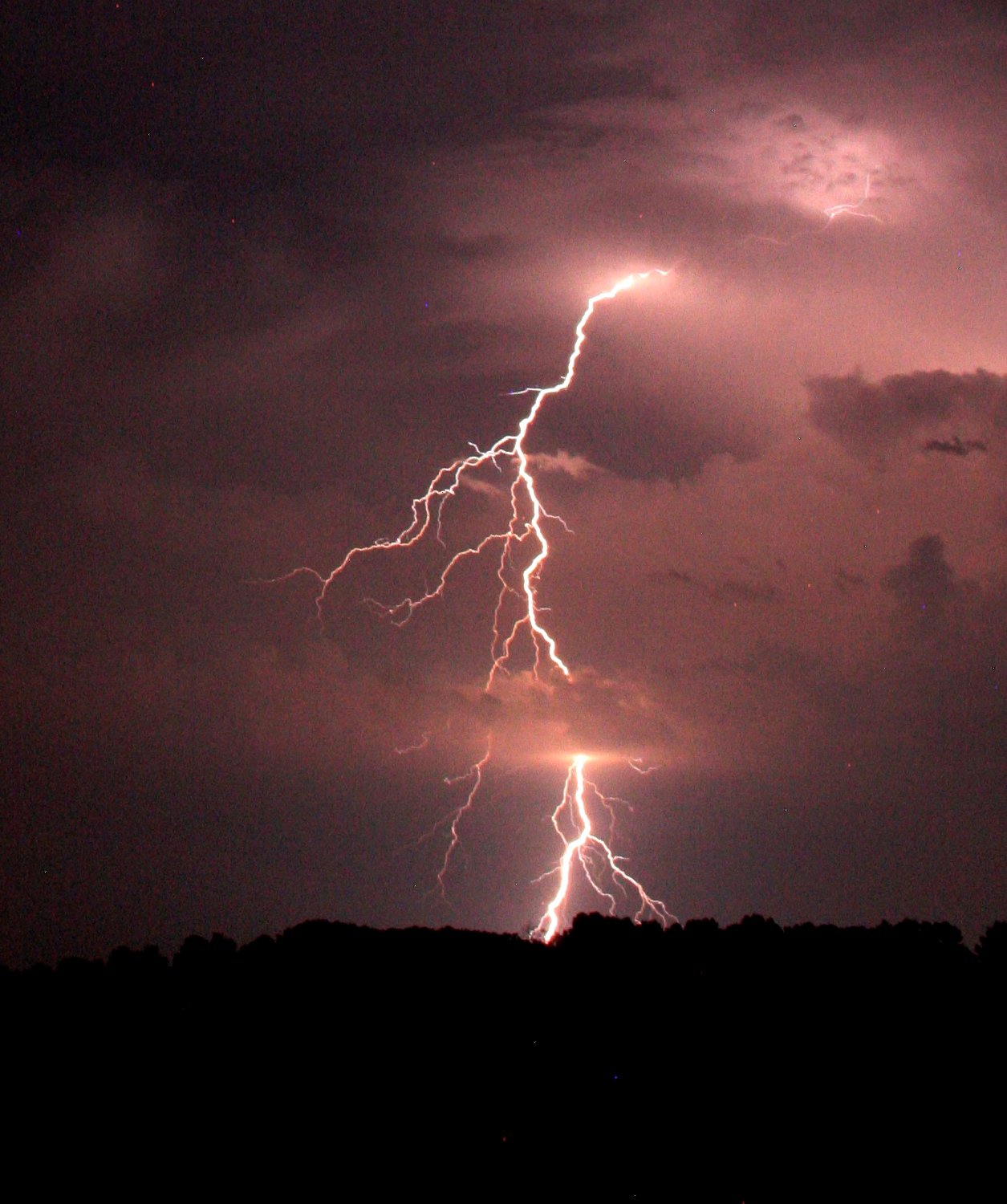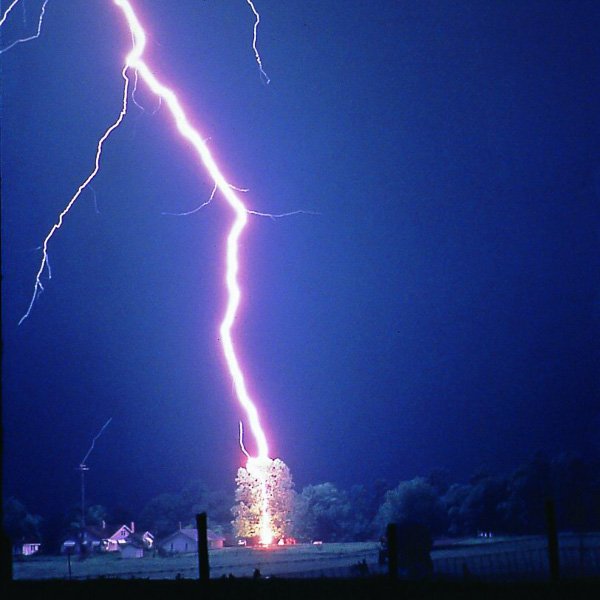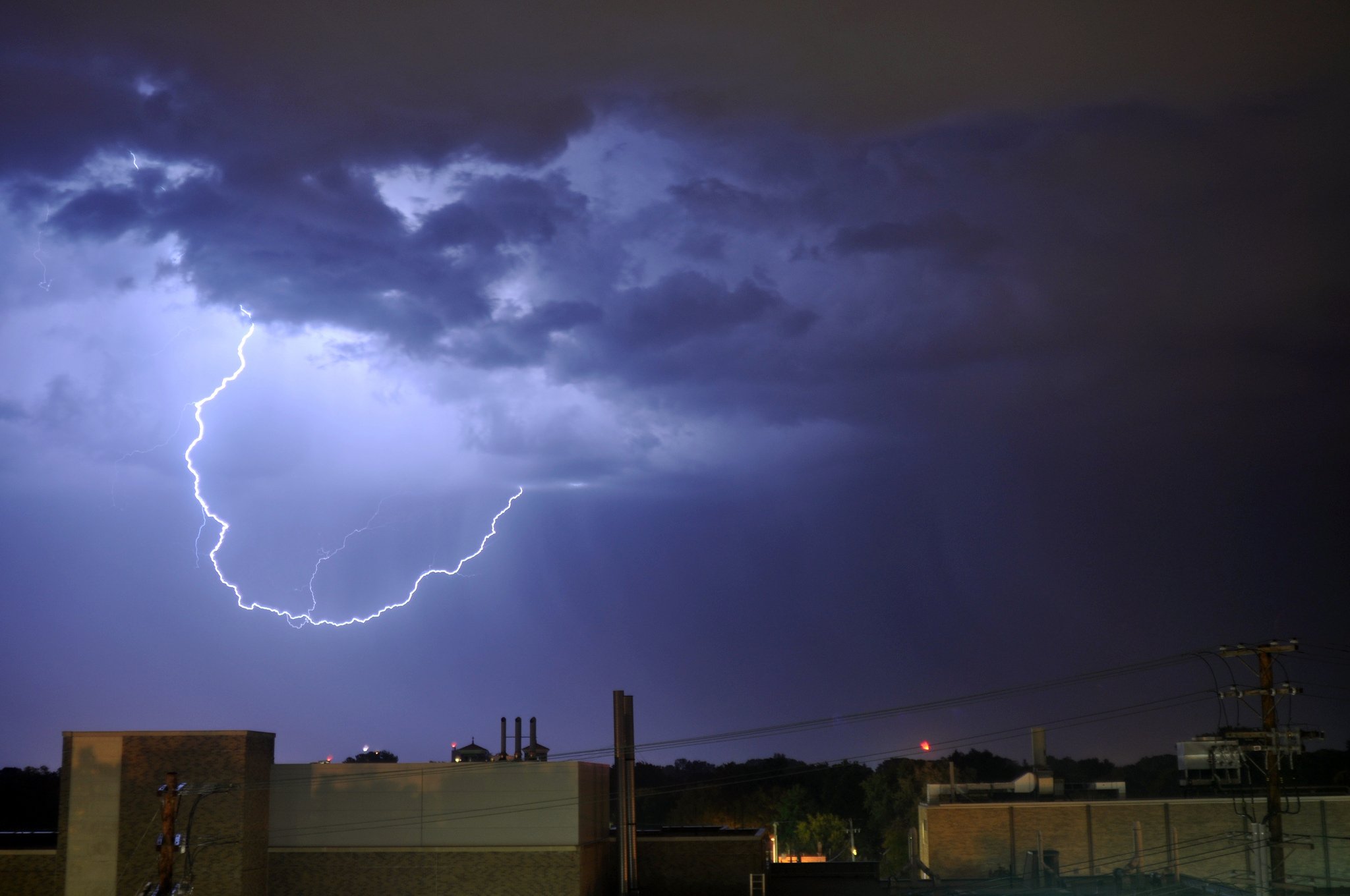Everyone who has seen a thunderstorm has observed cloud-to-cloud and cloud-to-ground, but what about ground-to-cloud, sprites, or elves? It turns out that there is a lot more to this electrical phenomenon than you may think.

Image Source
Types of Ground Flashes
According to the NOAA there are two types of ground flashes, natural and triggered. Natural lightning is cloud to ground and triggered lightning is ground to cloud.
Cloud to Ground Lightning

Image Source
Typical cloud-to-ground lightning starts with a stepped leader. The stepped leader is a channel of negative charge that zigzags downward in a forked pattern of roughly 50 yard segments. At the same time a channel of positive charge called a streamer is reaching up from the ground. Streamers normally reach upwards through something tall like a tree. Both the stepped leader and the streamer are invisible to the human eye. But when they connect a powerful electrical currents begins to flow. A return stroke of brilliant luminosity travels back towards the cloud at about 60,000 miles per second traveling in a channel of one to two inches in diameter.
Ground to Cloud Lightning

Image Source
The artifically initiated or triggered lightning includes strikes to very tall structures (buildings), airplanes, rockets, and towers on mountains. This ground-to-cloud lightning is less common than cloud-to-ground lightning.
Super Slow Motion Video of Upward Ground to Cloud Lightning

From Discovery Channel's "Raging Planet" series
Cloud Flashes
Cloud flashes are the most common type of lighting. Cloud flashes occur roughly 5 to 10 times more than ground flashes.
Cloud to Air Lightning

Image Source
Cloud-to-air flashes are visible channels that extend from the cloud out into the air around a storm but do not strike the ground.
Intra-Cloud Lightning

Image Source
Intra-cloud lighting is embedded with a cloud and lights up as a sheet of luminosity during the flash.
Cloud to Cloud Lightning

Image Source
Cloud-to-Cloud lightning travels from cloud to cloud without touching the ground.
Spider Lightning

Image Source
Spider lightning consists of long, horizontally traveling flashes often seen on the underside of stratiform clouds.
Transient Luminous Events
Image Source
Researchers are still learning about other types of rarely seen lightning phenomenon produced by large thunderstorms that occur high in the atmosphere called transient luminous events.
Red Sprites
Image Source
Red sprites occur at the same time as powerful positive cloud-to-ground lightning strokes. The red sprites can extend up to 60 miles from the cloud top.
Blue Jets
First witnessed by pilots, blue jets emerge from the top of the thundercloud and extend upward in narrow cones fanning out and disappearing at heights of 25 to 35 miles. Blue jets are not directly associated with cloud-to-ground lightning.
Elves
First observed in 1992 by a low-light video camera on the space shuttle, elves are rapidly expanding disk-shaped regions of lumninescence up to 300 miles across. Elves last less than a thousandth of a second and occur above areas of active cloud-to-ground lightning.
References and for more information:
The National Severe Storms Laboratory at NOAA: Severe Weather 101 - Lightning
